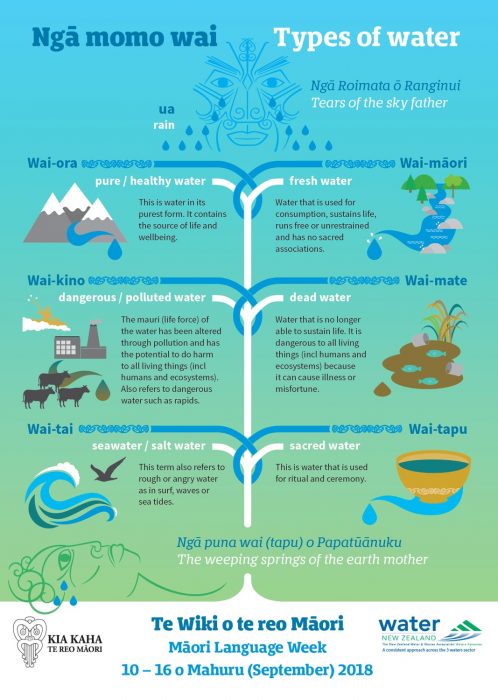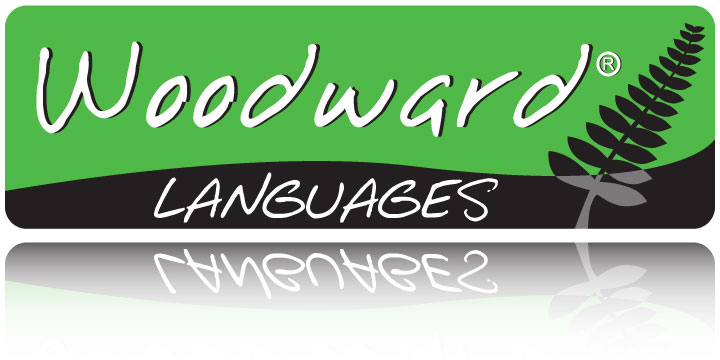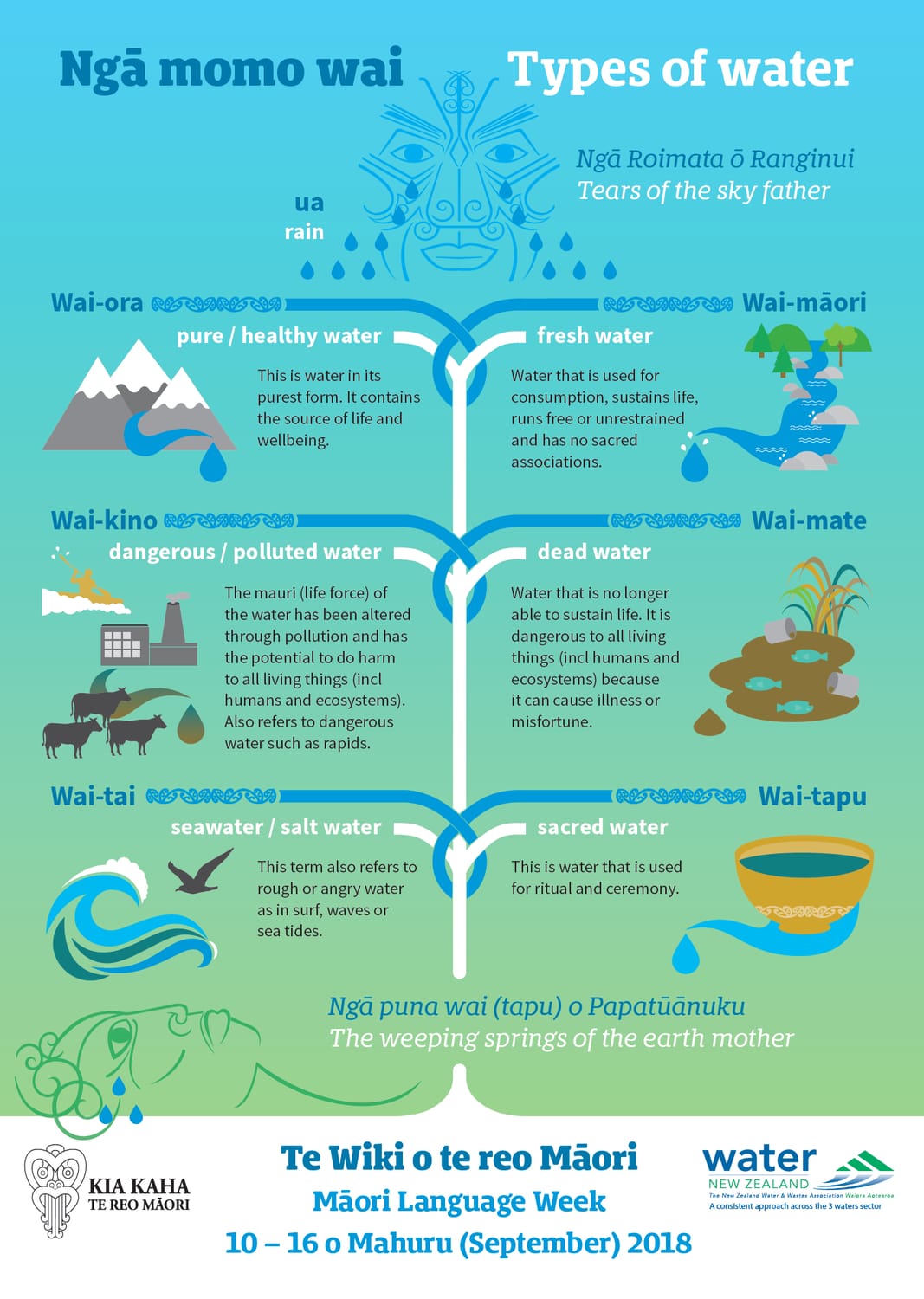Once a year we celebrate Te wiki o te reo Māori (Maori Language Week) here in New Zealand. This year it is from 10-16 September (2018).
This year Water New Zealand created a poster for you to pin up in your office or by your desk that they hope will help in understanding the importance of water and the words we can use to describe water from a Māori perspective.

The poster shows us key water types with a description of what they mean and includes the importance of Ranginui (Sky Father) and Papatūānuku (Earth Mother) in providing us with precious waiora – life-sustaining water.
Let’s look at the vocabulary about water in Māori that appears on the chart…
Ngā Momo Wai – Types of Water
Waiora = pure / healthy water
This is water in its purest form. It contains the source of life and wellbeing
Waimāori = fresh water
Water that is used for consumption, sustains life, runs free or unrestrained and has no sacred associations.
Waikino = dangerous / polluted water
The mauri (life force) of the water has been altered through pollution and has the potential to do harm to all living things (including humans and ecosystems). Also refers to dangerous water such as rapids.
Waimate = dead water
Water that is no longer able to sustain life. It is dangerous to all living things (including humans and ecosystems) because it can cause illness or misfortune.
Waitai = seawater / salt water
This term also refers to rough or angry water as in surf, waves or sea tides.
Waitapu = sacred water
This is water that is used for ritual and ceremony.
Ua = Rain
Ngā Roimata ō Ranginui
Tears of the sky father
Ngā puna wai (tapu) o Papatūānuku
The weeping springs of the earth mother.
Ko te wai te ora ngā mea katoa.
Water is the life giver of all things.
How do you say water in Māori? … Wai.

